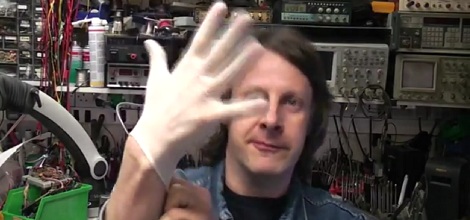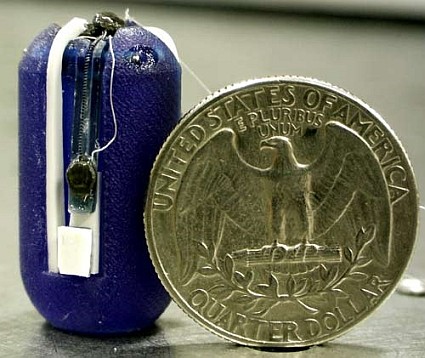
Normally, colonoscopies are rather invasive affairs. Swallowing a small pill with a camera is much more amenable to a patient’s dignity and are seeing increasing usage in colon cancer screening. [Mike] acquired a pillcam from a relative who underwent the procedure and did a teardown to figure out how it works.
To get the video signal out of the body, the pillcam has two contacts that conduct the video signal through the body to stick-on contacts; It’s a more power efficient way of doing things versus a radio transmitter. After opening the plastic and metal capsule, [Mike] found three batteries and an impressively small circuit that contained an array of LEDs, a camera, and what might be a small MCU.
Taking a scope to the electronics in the pill, [Mike] found an impressively complex waveform that sends uncompressed image data to the receiver every few seconds. Although the camera was somewhat destroyed in the teardown, we’re pretty confident [Mike] could decode the image data if he had another… ‘sample.’
[Mike] says if you can ‘retrieve’ another one of these pill cameras, he’ll gladly accept any donations and look into the differences between different makes and models. Just make sure you sanitize it first. After the break you can see [Mike]’s teardown and the inevitable poop jokes in the comments. One last thing – if you’re over 50, doctors should be looking at your colon every 5 or 10 years. Get screened.
















